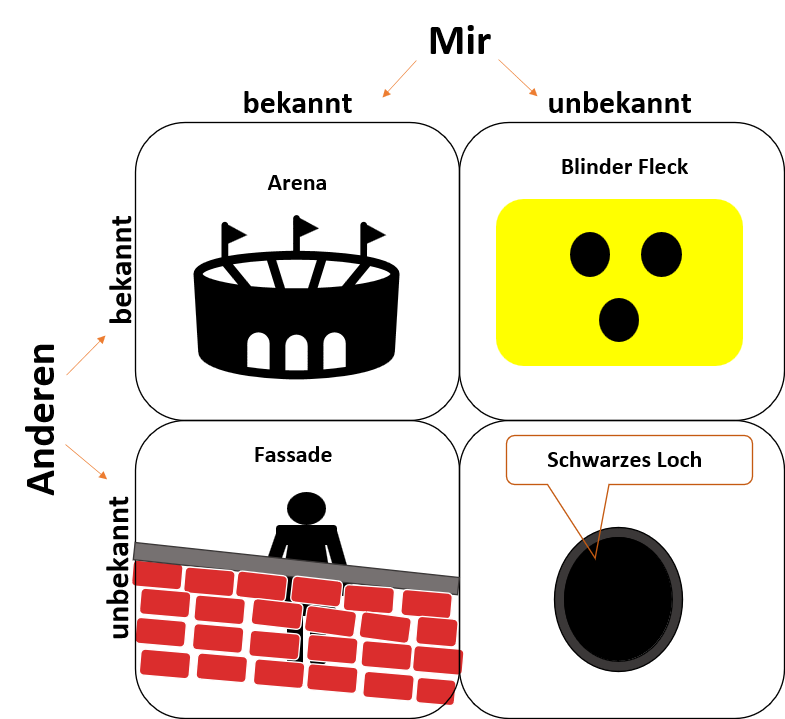Johari Window
Using the Johari Window can greatly increase the willingness to accept feedback.
Johari Window
The Johari Window model was developed in the 1950s by two American social psychologists named Joseph Luft and Harry Ingham. The name "Johari" combines parts of the first names of these psychologists.
In interactions, there are different perspectives. Often, what we know and think about ourselves is not what others think about us. By using the Johari method, you can visualize self-perception and how others see you. This is especially helpful in group work. Understanding how you appear to others helps you understand their behavior towards you. This understanding makes teamwork and interactions easier.

Me
The individual, e.g., the feedback receiver.
Others
The group, the feedback giver, the public in the current context.
Arena
This part of the window includes everything known to both the individual and others about the individual (intersection of self-image and how others see you).
Example: Fred tells his friend Ina, "I like eating vegetarian." Both Fred and Ina know this.
Facade
Behind this part of the window is everything known to the individual (Me) but not revealed to others (Others), either consciously or unconsciously (Arena + Facade = Self-image). By revealing (e.g., justifying unacceptable feedback), the facade is reduced.
Example: Fred actually enjoys eating fish but doesn't want to reveal this to his vegetarian friend Ina.
Blind Spot
The blind spot includes everything others perceive about the individual that the individual is unaware of (Arena + Blind Spot = How others see you). When the blind spot is reduced, a learning process begins.
Example: Ina becomes very aggressive under stress. Fred knows this, but Ina is unaware of this trait.
Unknown
The unknown includes everything unknown to both me and others. Unconscious thought patterns and beliefs fall into this part of the Johari Window.
Example: Ina is very manipulative. Neither she nor her friend Fred is aware of this.
The Johari Window in Training Contexts
In training, using the Johari Window can create a willingness to accept feedback by illustrating the so-called "blind spot" in a person's self-image. This model is also suitable for anticipating objections.
The goal is to enlarge the Arena. Either feedback is accepted (reducing the blind spot, expanding the Arena) or one reveals oneself (reducing the facade, expanding the Arena).
The closer self-image and how others see you are, the easier and more effective interactions and group work become.
